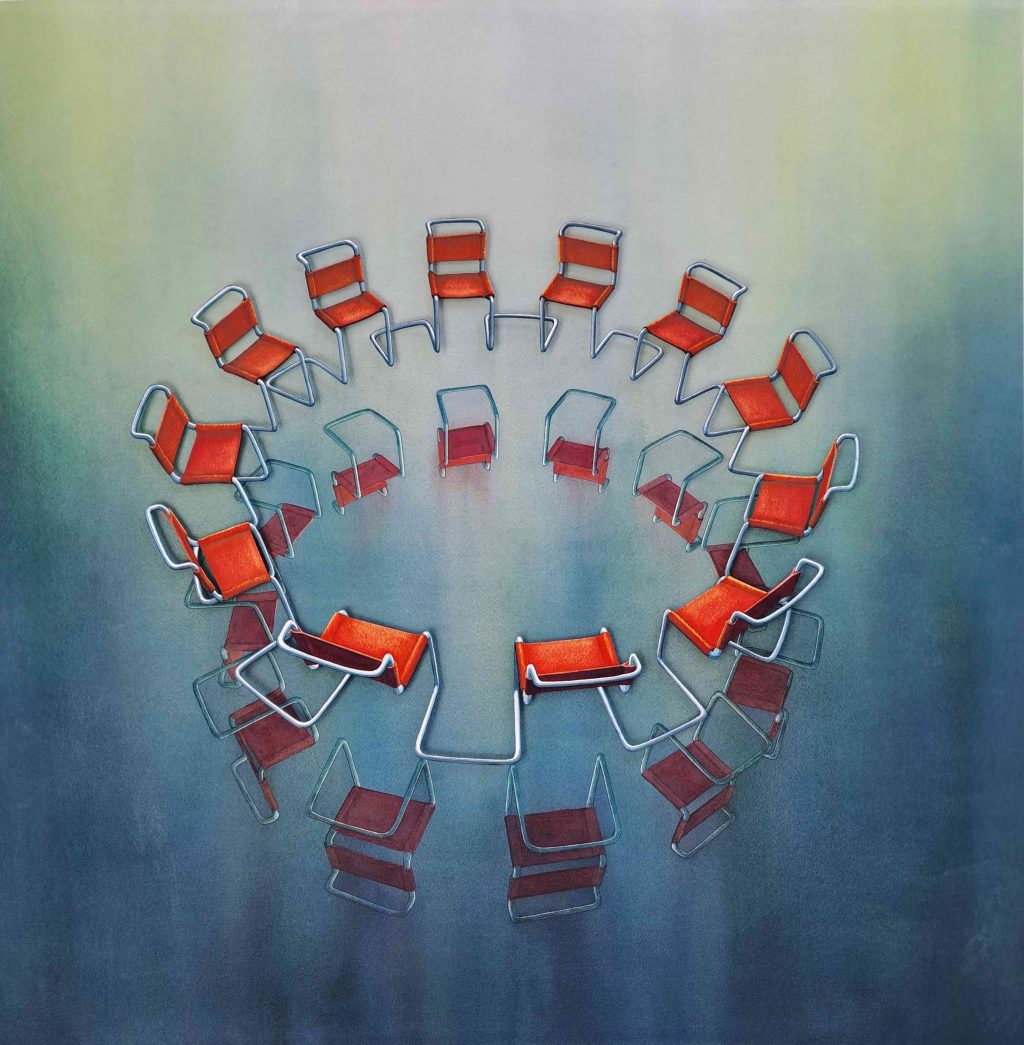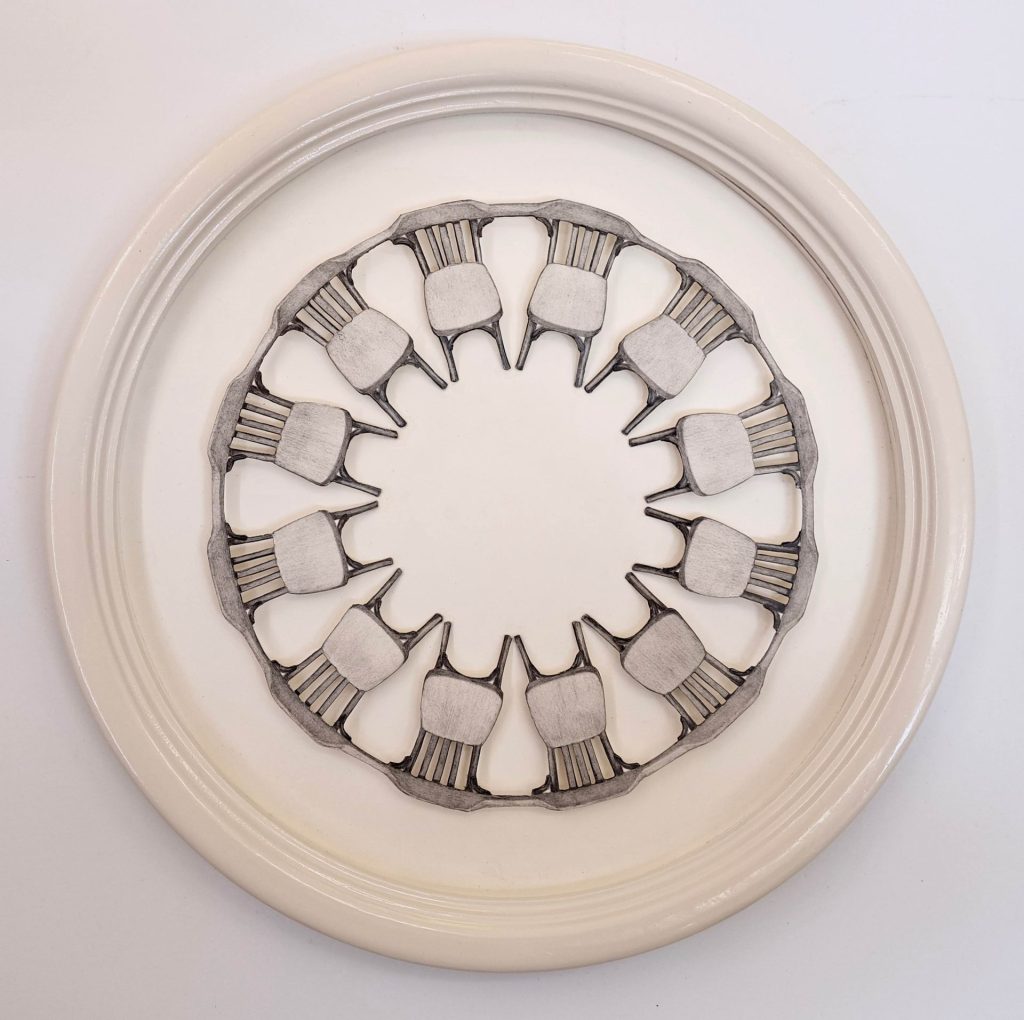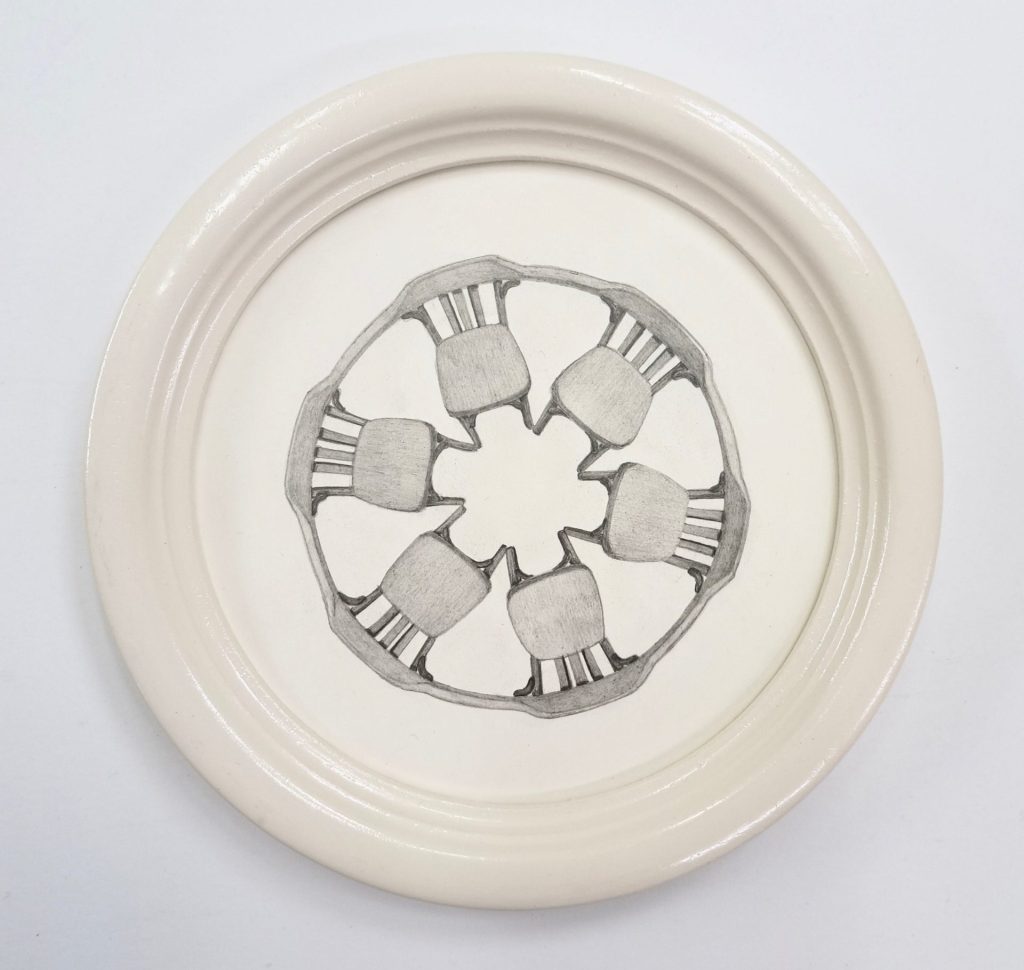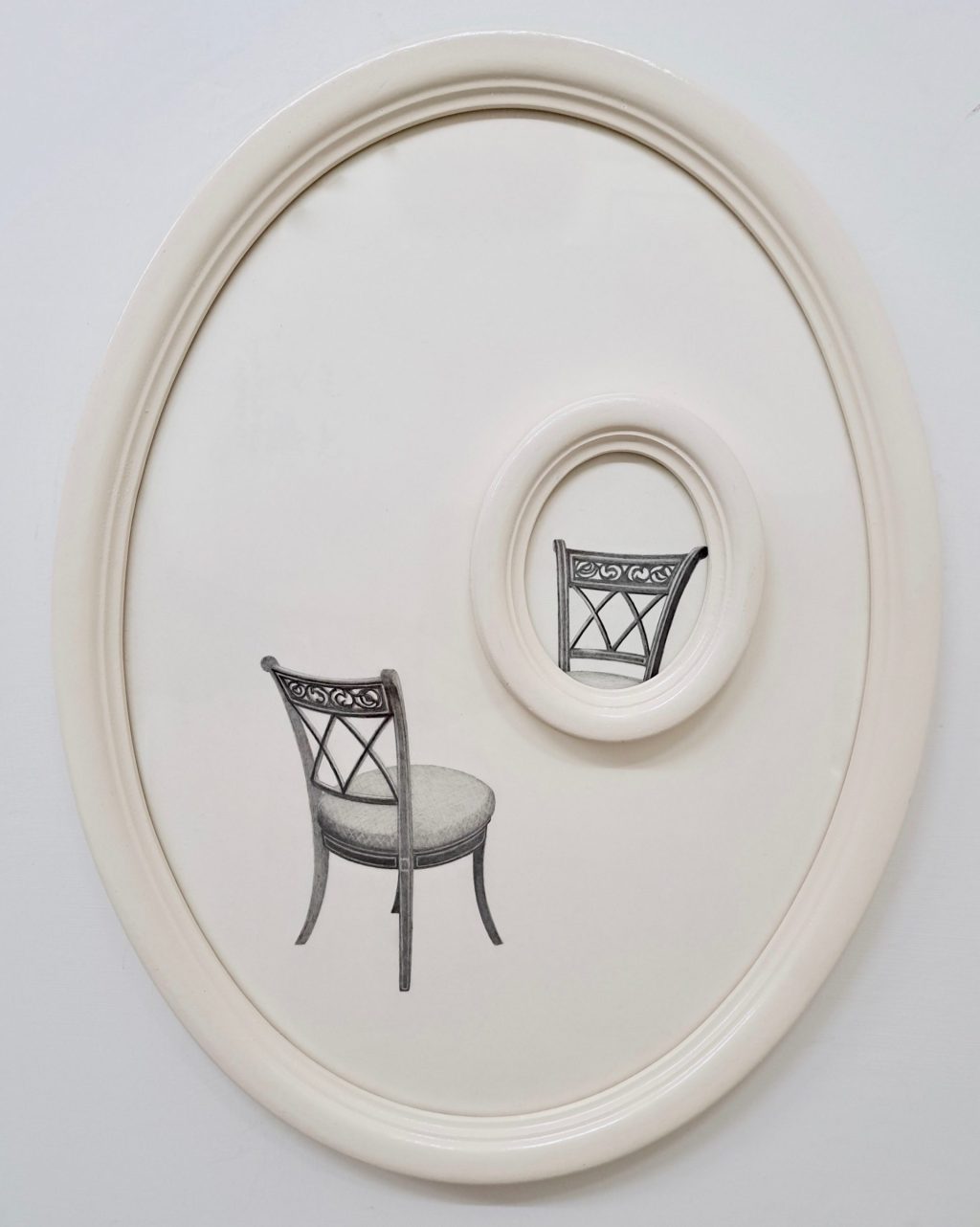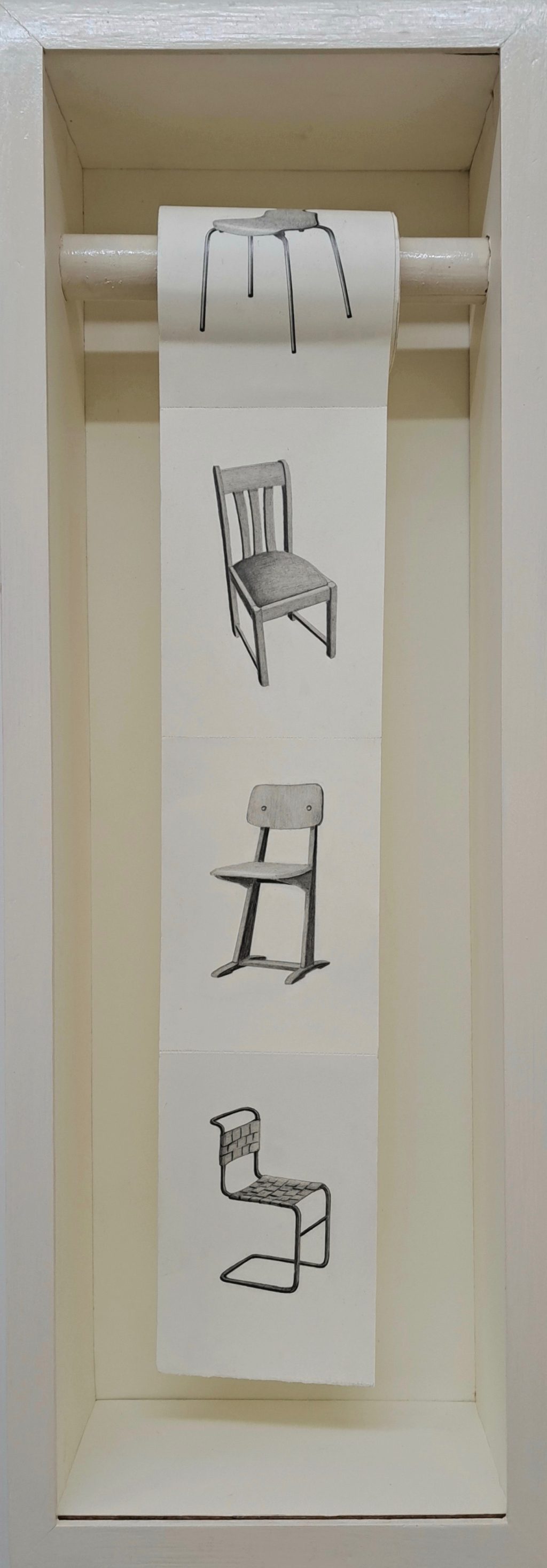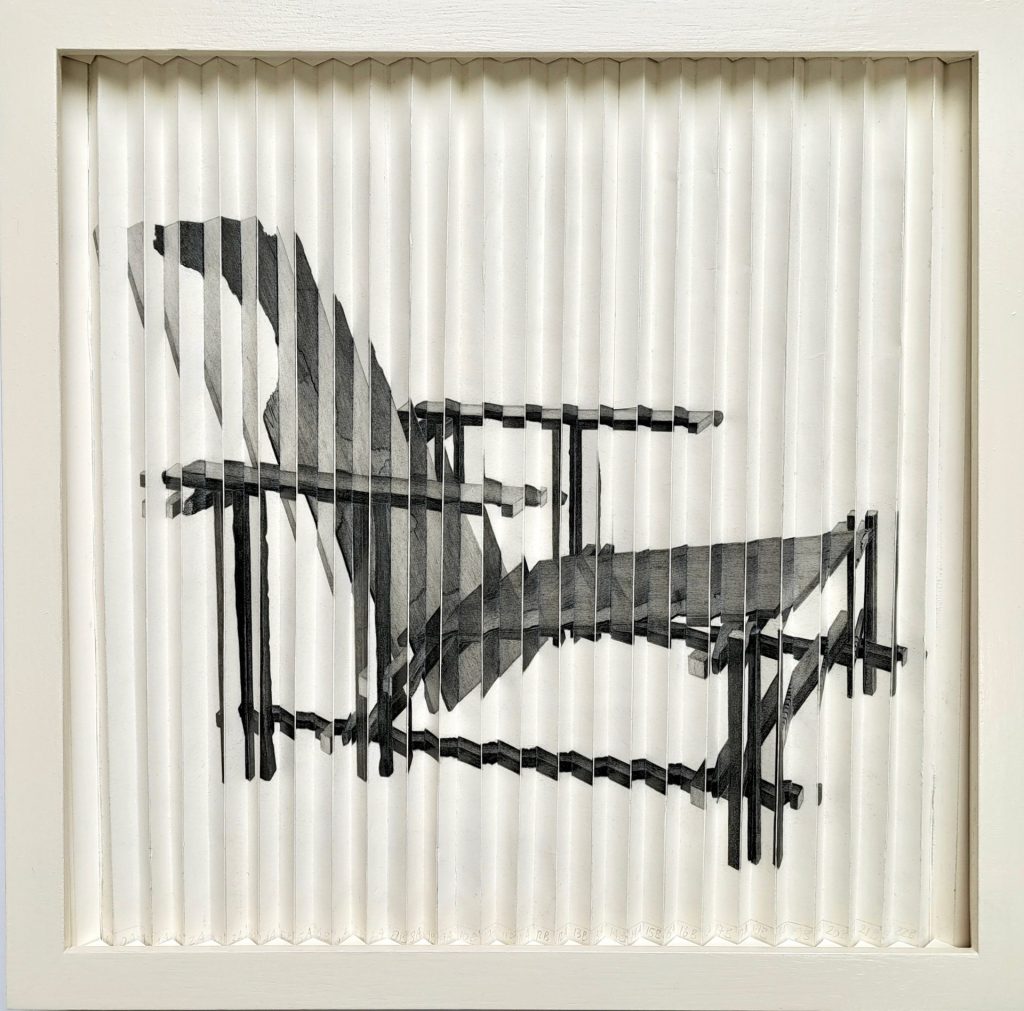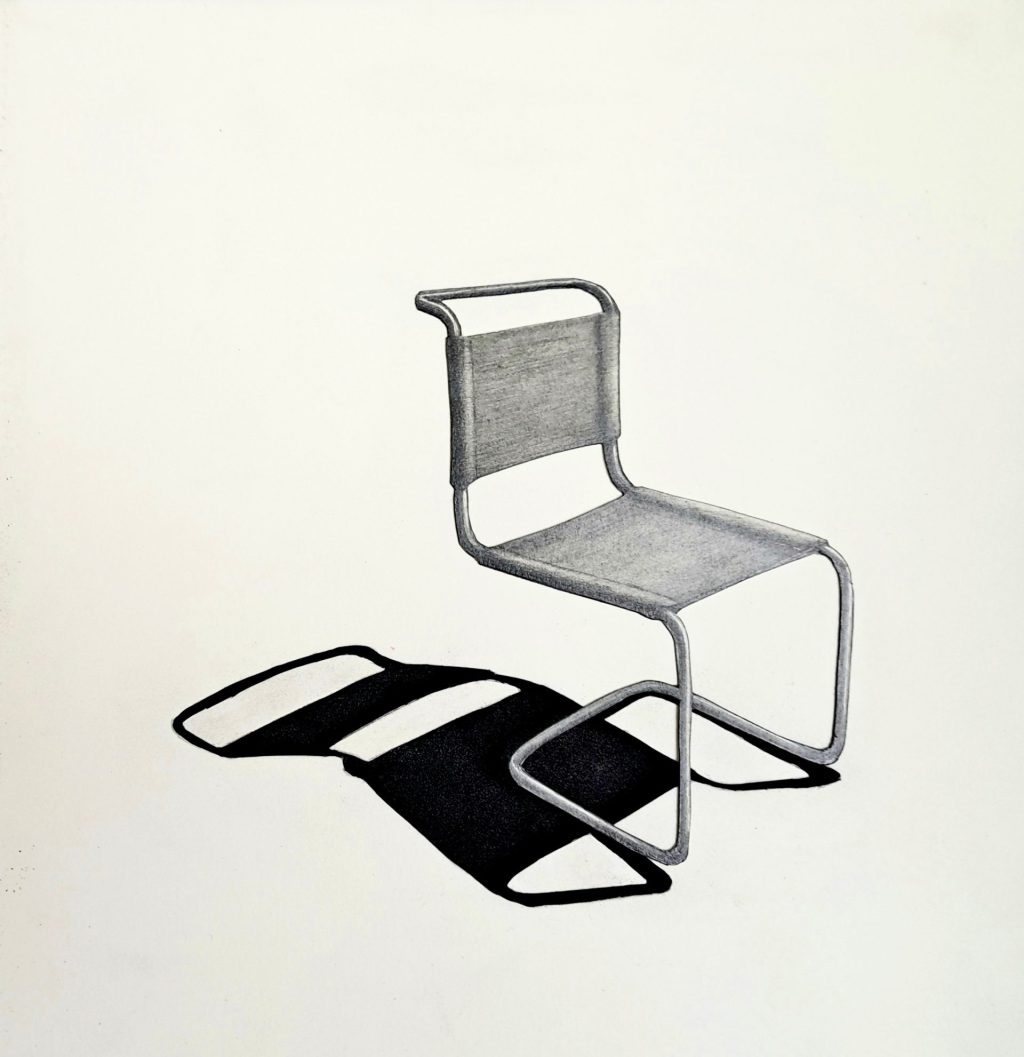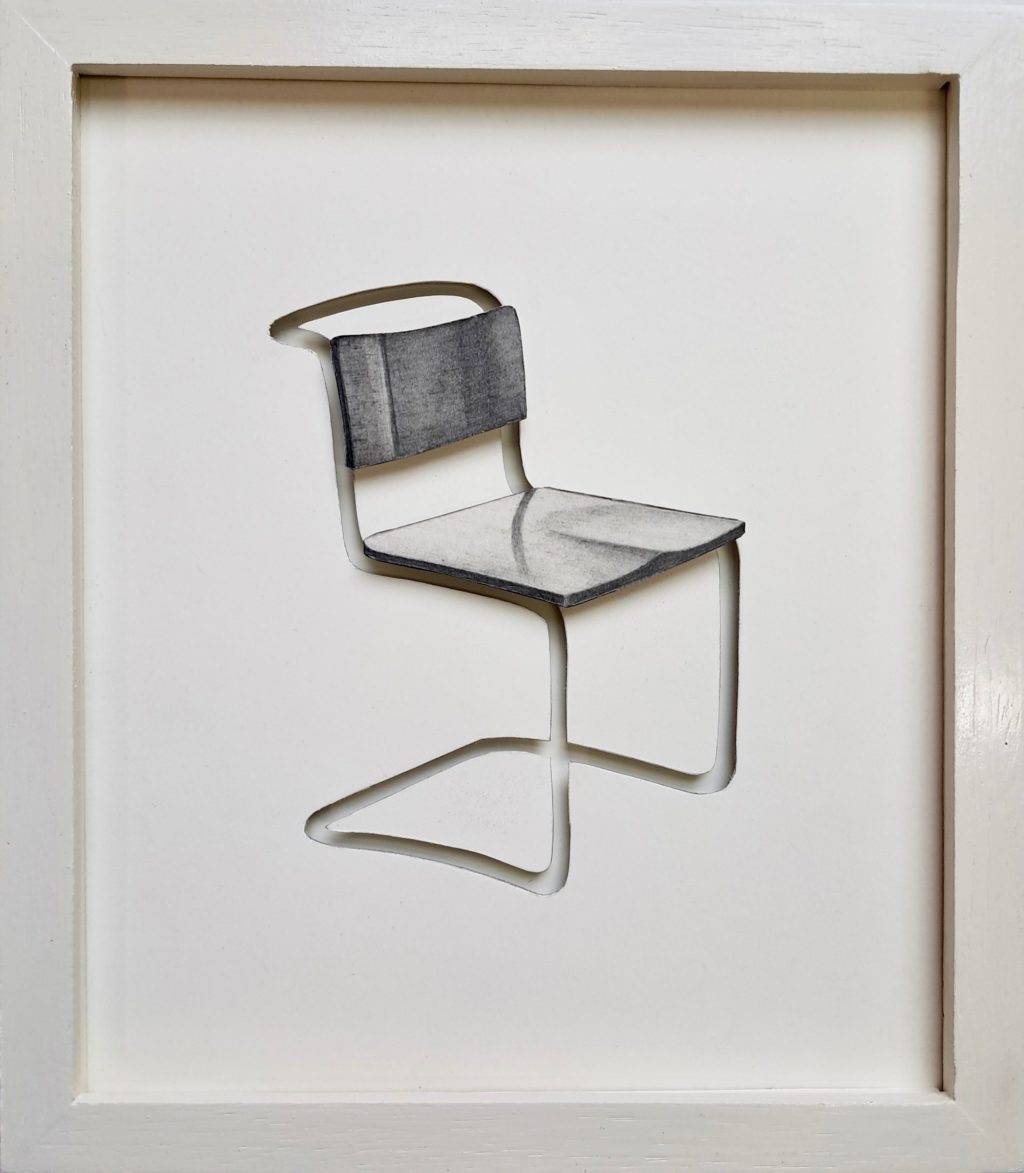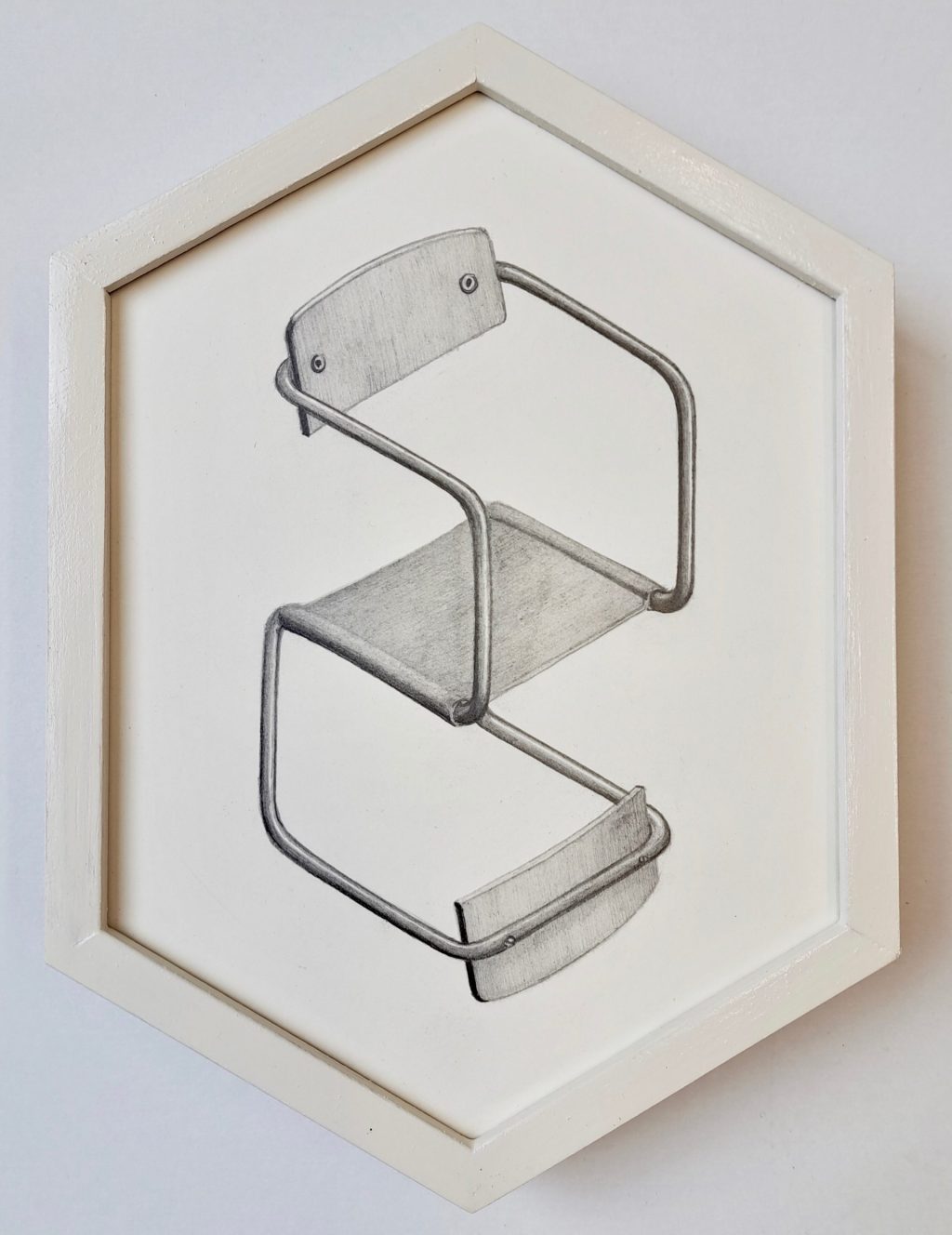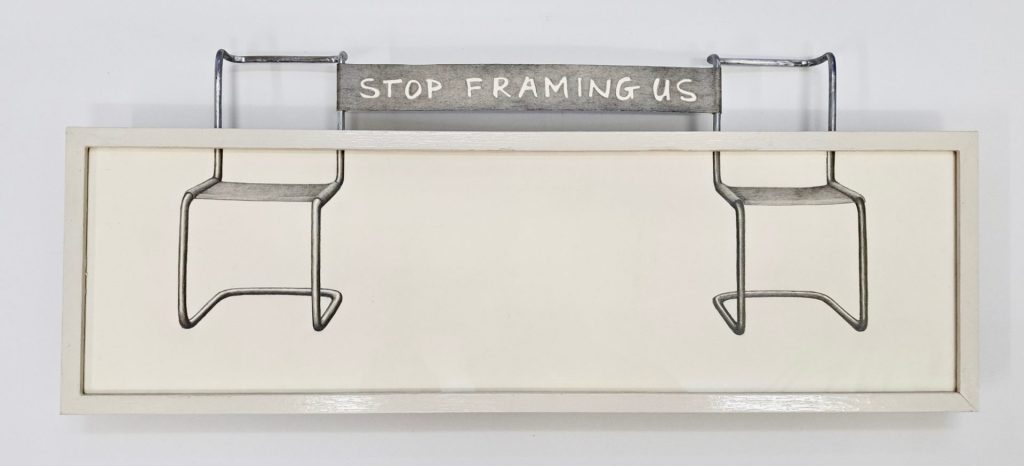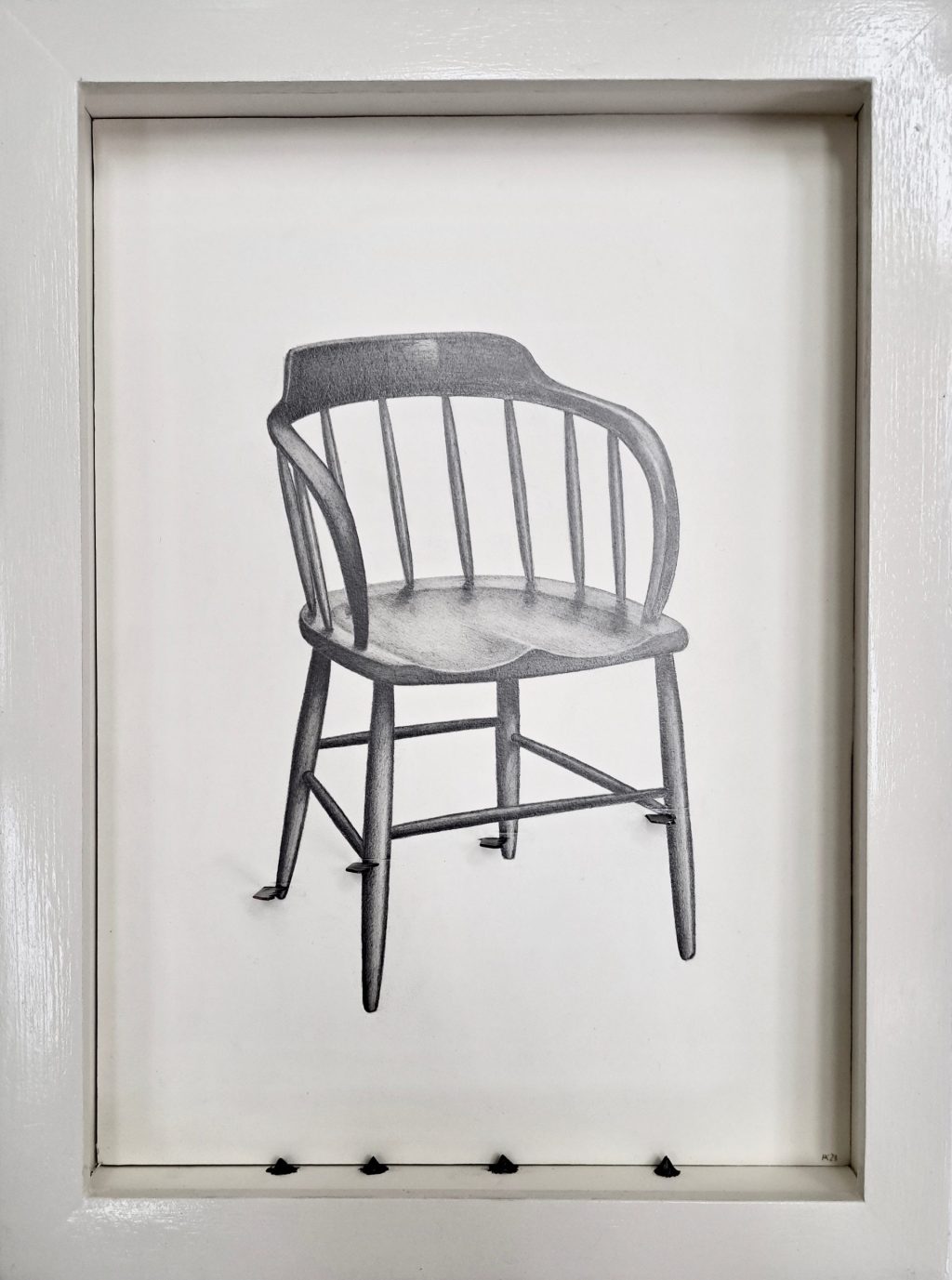Shop
Solo simili
Levelen V,(Leveling) where the tube frame appears drawn but is cut out, where the shadow effect still gives the shape the metallic color (or is that just projection based on conditioning?) which I made earlier this year, forced me kind of to go even further. That work challenged me to investigate whether it could be done with even less. A sample convinced me and here is the result: Solo simili. Simili refers to the paper used, namely simili japon. This is from the Dutch paper factory Schut.
Bookaction
A special offer for this occasion because during Huntenkunst 2024 you can purchase both books in one purchase for only 30 euros. And I’ll sign them for you too.
The most concerned with his own reflection is certainly the Greek mythical figure Narcissus. The famous Italian painter Caravaggio made a masterful painting about it. This graceful chair turns its back on us, but in a detour its downside is clearly visible to us. In painting, the use of mirrors or reflective surfaces has a long tradition. An impressive example is Las Meninas by the Spanish painter Diego Velazquez from 1656. However, depicted in this sober way, in addition to the mirroring, the focus is also entirely on the chair depicted and on the frames. This combination forms an image that we know in many variations from popular culture.
Gerrit Rietveld’s Zigzag or Z chair is displayed somewhat atypically in this viewing cabinet. Adequate protection against too much incident light, you would say. However, the deep shadow contradicts this. And the chair is completely painted or better meaning in pencil. Does that make it a pencil drawing?
Tijdkring IX
The title Time Circle first appeared in my work in 2002. Before that, there were many works in which the circle was a crucial part of the image. Like, for example, Meal of Friends or Stoelendans (Musical chairs). Visualizing the intimate connection with each other is perhaps more beautiful than reality because friction quickly begins to occur there. The moment when every individual fits comfortably into the group never lasts long. Recognizing that moment and enjoying it is often only possible when you look back. The cutting technique that I first discovered in Rietveld and subsequently applied in many works such as Stampede or Babel’s End II is also applicable on this scale.
Carrousel II
This Carrousel II was actually made as a sketch at the same time as Carrousel. Because I didn’t have the frame for this one yet, unlike Carrousel, it was completed a little later. But there is more because in this drawing I have again used the cutting technique and also mounted the circle of chairs in front of the background, giving the light the opportunity to subtly influence the drawing. It creates subtle confusion.
Carrousel
Handrails stretch towards each other until they connect. Six chairs merge into one piece of furniture. I have notoriously bad experiences with spinning, I can’t handle it very well. One of my older memories (first year of kindergarten) is about dancing in a circle. The carousel at the village fair. Yet a rotating circle definitely has its beauty as long as I only have to draw it…
Mirror III
In 2013 I made Spiegel II and I already had the idea to try it with an ellipse, an oval frame. An oval can also be interpreted by the eye, the viewer, as a circle in perspective. The only problem for me was , you just don’t make an oval frame or better two very easy. A least not from solid woord. Recently, while googling, I came across Achter de dijk in Schagen, North Holland. They make round and oval frames in various sizes from good quality wood. I immediately ordered a few tot try them. Apart from painting, I only edited the small frame a bit so that I can drop it into the ‘glass’.
Rolstoelen
There are roles that we all know. Which we all use several times a day. Also paper indeed. Material that is also very important to me in another way. I draw on it and I also work with it in some of my drawings. See, for example, Blend also from 2024. But working on this drawing associations with other more mythical roles pop up in my head. Roles, or better scrolls, that are also an important part of our culture. Scrolls that belong to the oldest carriers of knowledge, of writing: The Dead Sea Scrolls. Other scrolls have also been in the news recently. Scrolls that became charred and buried under lava, rocks and ash as a result of the eruption of Vesuvius some two thousand years ago. Thanks to the ingenious use of artificial intelligence and scanning techniques, we can now read parts of it. I like to connect extremes (King, Emperor, Admiral… popla* knows them all) and like to play with the relationship between words and images. Check for example, Stoelgang elsewhere on this website, which is most applicable in this context. Two wheelchairs, a drawing I made in 2023 could also be called a precursor. In this way I share my knowledge with a role for every chair.
*Popla was a dutch manufacturer of toiletpaper/toilet rolls and this link leads to a (dutch) television commercial dating from the eighties.
Blend
I visited the exhibition ‘Chair takes a stand’ (23 September – 14 January 2023) in the Centraal Museum in Utrecht. Of course I visited this exhibition. The first room was in a sense reserved for the slatted armchair, also known as the Red-Blue chair, by Gerrit Rietveld‘. This room with all kinds of very diverse appropriations and interpretations of this design convincingly illustrated the considerable impact of this design. Dutch comedian Claudia de Breij, for example, appears to have used it in the decor of one of her shows. In this case the ‘set piece’ was covered with newspaper clippings. Contemporary designers started and continue to run with it. One of the more drastic and actually moving versions is by designer Maarten Baas. In his smoke series he attacks various iconic furniture and more with fire. He treats the blackened remains with a resin so that the object, weakened by the fire, becomes sturdy and therefore usable again. He also did that years ago with this Rietveld icon. Weeks later, back in my studio, the idea arose to blend the two together and treat both versions equally. Baas and Rietveld in the blender, so to speak.
Uit de schaduw
For anyone who has ever drawn more seriously, ‘deep shadow’ or ‘the depth of a shadow’ will not sound strange. Especially when you want to highlight your subject by drawing from observation, it helps enormously to regularly, or sometimes even just, focus on the shadow. This often gives the depicted object an effective boost. What if the depth of the shadow is taken literally? And what does that do visually? ‘Out of the shadows’ a playful exploration.
Turnover
This drawing was created while freewheeling in my sketchbook. Too stimulating to pass up, so I worked on it straight away. Isometry and the ‘Freischwinger‘ are a good combination.
Stop framing us
For an artist who makes his own frames and who likes to juggle with language, the English word ‘to frame’ is a godsend. See my series Framing Rietveld or more recently Framed II and Framed IV and Unframe. In recent years, despite my best intentions, my drawings have sometimes tended to squeak, crawl, or more brutally stick out of the frame. That idiosyncrasy manifests itself very emphatically in this work where the depicted chairs take a stand against me. I don’t know if I’m going to give them their way.
De Aanslag II
While making De Aanslag (The Attack), the idea arose to have the, at least for me, iconic criminal quartet De Daltons commit an attack on a chair. After all, a chair has a leg for everyone of them. Not every chair is suitable for this. Ultimately I came to Rietveld’s military chair. When the drawing was almost finished, I suddenly realized that the Daltons lived in a completely different time, well before Rietveld. No idea why I didn’t think of that sooner. I then looked through my Lucky Luke albums and kept coming across the same type of chair and with a little good will it was also suitable: The Assault II.
Lean on me
We sit too much, you hear more and more. But with increasing knowledge of ergonomics, chairs are also becoming more suitable, so that the urge to leave the sitting position is completely vanishing. What incentive can we use to turn this tide? Barbed wire!






